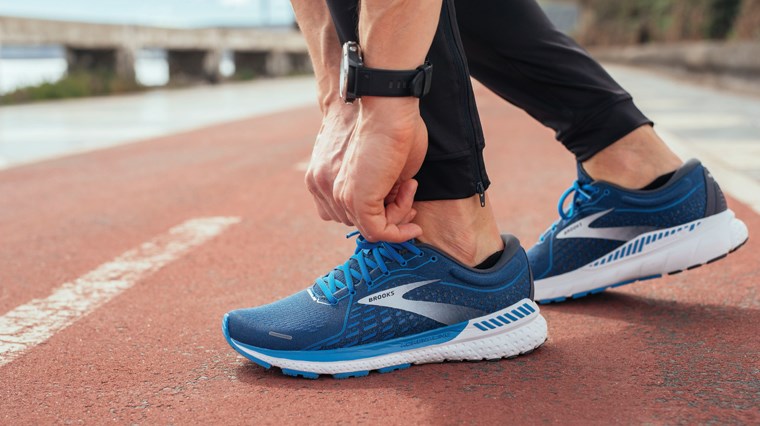When Should You Replace Your Running Shoes?

Running shoes are your #1 essential and best mates in your running wardrobe. We’ve talked about running shoe longevity in the past, but it’s certainly a topic worth rehashing for the health of not only your feet but your ankles, knees, hips and spine.
Worn-out running shoes can adversely effect your body alignment and proper running form. Neglecting to replace your running shoes when their expiration date is ticking can impede your performance and puts you at greater risk of common running injuries.
Although you've probably heard running shoes should retire anywhere between clocking up 500 - 800km, what does that actually look and feel like?
Upper
The upper acts as the breathable ‘shell’ of the running shoe and is often made of lightweight mesh or knit materials. Like any fabric it can wear out over time, developing holes or areas of weakness as it stretches with use and becomes exposed to the elements.
Signs of a worn-out upper include:
- Wear and tear such as the deterioration of the stitching
- Tearing where the upper connects to the midsole
- Your toes have punched through the toe box
- Weakened heel counter is no longer supportive
Midsole
The primary goal of the midsole is shock absorption – protecting your feet, ankles and knees from repetitive impacts on hard surfaces. The deterioration of the midsole is often undetectable from a visual inspection, but it is usually the first part of the running shoe to wear out.
A collapsed midsole can be felt in your stride where soft, cloud-like landings and smooth transitions give way to a jarring ‘pounding’ feel underfoot. If you experience pain points or new areas of soreness, a worn-down midsole could be to blame.
Signs of a worn-out midsole include:
- You can feel that the cushioning has deteriorated – no longer providing the responsive ‘snap’ or springy out-of-the-box feel
- The midsole is compressed – it doesn’t bounce back into shape or dampen impacts like it used to
- Do the twist test – unless they’re barefoot shoes like Vivobarefoot, if the running shoe can twist or fold in half easily without resistance, it’s time for the midsole to retire
Outsole
The outsole is the ‘tyre’ of your running shoes – allowing you to get a grip on running surfaces. Flip your running shoes upside-down and you’ll find it’s easy to locate the areas of outsole wear.
Signs of a worn-out outsole include:
- 'Bald spots' on the outsole where the tread has flattened and become smooth – like worn-out tyres, the traction has deteriorated
- The outsole has worn through to the midsole
- The outsole is fraying at specific areas of high impact – like the back of the heel for heel strikers
- There is an obvious tilt to the running shoe when positioned on a flat surface - for overpronators (runners that roll their feet inward), this usally occurs on the inside edge of the shoe, and for supinators (runners that roll their feet outward) it occurs on the outside edge
Subscribe to the Sportitude YouTube channel so you never miss out on the latest shoe reviews and practicals tips for runners.
Happy running!
